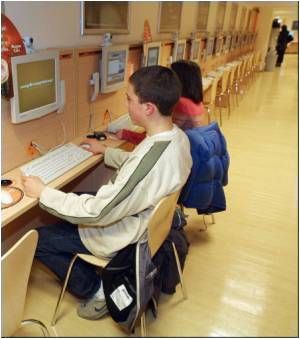
1,881 schoolchildren living in Germany took part in the survey conducted by the Institute for Interdisciplinary Research on Conflict and Violence (IKG) and commented on their experiences with cyberbullying as a victim, offender or witness.
"Cyberbullying is not a trivial matter," said Peter Sitzer of Bielefeld University. Sitzer and his colleagues have investigated the experiences of adolescents with attacks through the Internet or by mobile phone.
Cyberbullying is the term used for attacks by one or more persons through the Internet or by mobile phone - where Facebook or an instant messenger, for instance, are used to denigrate or humiliate someone or harm their social relationships. A weaker person is the target of repeated and intentional attacks.
For social scientists Dr Peter Sitzer, Julia Marth and their team, the purpose of the study is to describe the various aspects of this phenomenon.
One focal point of the online survey was the degree of distress felt by the victim related to the various forms of cyberbullying.
Advertisement
The researchers put these findings down to the fact that the impact of this form of cyberbullying is difficult to control; digital photos and videos can often be duplicated and distributed any number of times and thus made available to a potentially unlimited audience.
Advertisement
"This might be because this form of cyberbullying can be aimed directly at the victim. In this case, there are relatively few witnesses," said Sitzer. Another possibility is that the adolescents consider such attacks as normal, everyday behaviour among their peers.
The scientists also questioned the victims about the forms of cyberbullying they had experienced. In many instances, the victims also claimed that rumours had been spread about them or hateful comments made.
Schoolgirls among the victims claimed comparatively often that they had been the subject of cyberstalking and that, against their will, someone had wanted to talk to them about sex.
"Our findings underline that cyberbullying is not a trivial matter but a serious problem which demands preventive countermeasures," noted Sitzer.
Source-ANI









